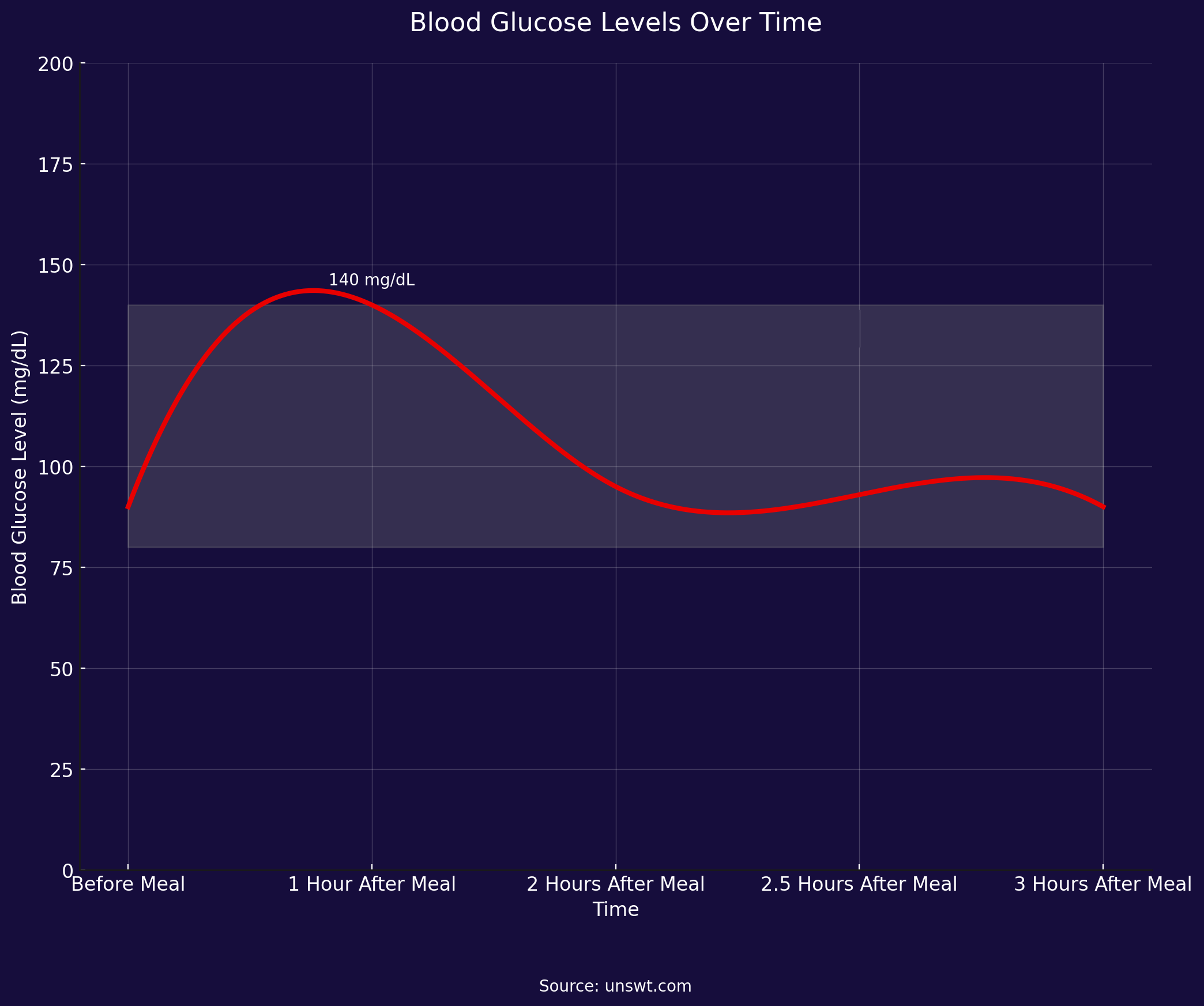Post-Meal Blood Sugar 🍽️ | unswt
Managing post-meal blood sugar is crucial for preventing diabetes and staying healthy. Learn about the normal range, tips for maintaining healthy levels through diet, exercise, and monitoring, and how unswt’s AI glucose prediction model helps you track and manage blood sugar effectively.

Maintaining healthy blood sugar levels is crucial for overall health, especially for preventing and managing diabetes. Post-meal blood sugar levels play a key role. Let’s explore the normal range for post-meal blood sugar and some tips to manage it effectively.
📊 What Is the Normal Range for Post-Meal Blood Sugar?
Blood sugar levels fluctuate after eating. For healthy adults, two hours after a meal, blood sugar levels should be below 140 mg/dL. A reading between 140-199 mg/dL may indicate prediabetes, while 200 mg/dL or higher suggests diabetes.

🔍 Why Is Post-Meal Blood Sugar Important?
Post-meal blood sugar reflects how your body converts food into energy. Maintaining normal blood sugar levels means your body’s metabolism is functioning well. Elevated levels may signal problems like insulin resistance or decreased pancreatic function, which can lead to heart disease, kidney damage, and other complications over time.
🛠️ How to Manage Blood Sugar Levels
To keep your blood sugar in check, follow these strategies:

- 🍏 Balanced Diet: Control your carb intake and focus on fiber-rich foods, protein, and healthy fats.
- 🏃 Regular Exercise: Stay active! Exercise helps lower blood sugar and improves insulin sensitivity.
- ⚖️ Weight Management: Maintaining a healthy weight is key for controlling blood sugar.
- 📈 Regular Monitoring: Frequently check your blood sugar levels to detect any issues early.
📝 Conclusion
Post-meal blood sugar levels should stay below 140 mg/dL for a healthy range. Managing your blood sugar is critical for preventing diabetes and living a healthy life. A balanced diet, regular exercise, weight management, and consistent monitoring are all essential to effective blood sugar control.
With unswt, all you need to do is snap a photo of your meal, and our AI model will predict how that food will affect your blood sugar levels. You’ll receive personalized meal coaching based on these predictions, helping you make informed food choices and maintain stable blood sugar levels. Visit unswt to discover how our smart tools can support your health goals!

🔗References
- Mount Sinai-Managing your blood sugar https://www.mountsinai.org/health-library/selfcare-instructions/managing-your-blood-sugar
- Cleveland Clinic-Blood Sugar Monitoring https://my.clevelandclinic.org/health/treatments/17956-blood-sugar-monitoring
🙋🏻 Frequently Asked Questions (FAQ)
Q1: When is the best time to check post-meal blood sugar?
📅 The best time is two hours after eating. This reflects the period after blood sugar has risen and insulin has started working to lower it.
Q2: What should I do if my post-meal blood sugar is high?
🍽️ Start by managing your diet and adding regular exercise. Consult a doctor to see if medication is necessary.
Q3: What eating habits help lower post-meal blood sugar?
🥦 Eating fiber-rich foods and reducing sugary, processed foods can help. Smaller, more frequent meals also help stabilize blood sugar.
Q4: How does exercise help with post-meal blood sugar?
🏃 Exercise improves insulin sensitivity, helping to lower blood sugar. A short walk after meals is great for reducing post-meal spikes.
Q5: What medical interventions might be needed for blood sugar control?
💉 Your doctor may prescribe oral medications or insulin therapy if your blood sugar remains high. Proper diagnosis and treatment should be guided by a healthcare provider.
Q6: What daily habits can help maintain normal blood sugar?
💡 Regularly check your blood sugar, maintain a healthy diet, exercise regularly, manage stress, and get plenty of sleep!




